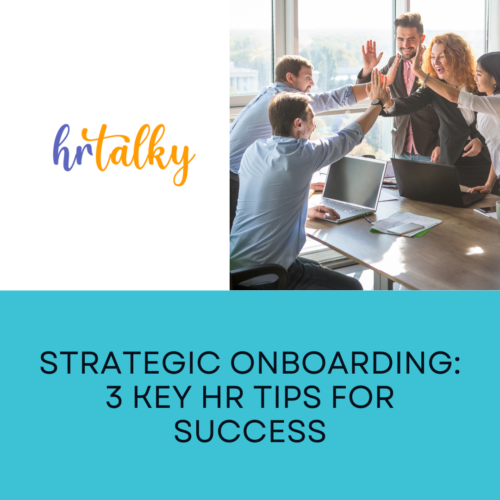Introduction:
Effective onboarding is a crucial component of a successful talent management strategy. A well-designed onboarding process not only helps new employees acclimate to their roles quickly but also contributes to higher retention rates and overall organizational success. Here are three key HR tips for creating a strategic onboarding program that sets the stage for long-term employee success.
- Personalized Onboarding Plans:
Every employee is unique, and their onboarding experience should reflect that individuality. HR professionals should consider tailoring onboarding plans to match the skills, experience, and needs of each new hire. This could involve conducting pre-employment assessments to understand the strengths and weaknesses of the incoming employee, allowing HR to customize the onboarding journey accordingly.
Incorporating personalized elements, such as role-specific training modules, mentorship programs, and introductions to key team members, helps new hires feel valued and supported from day one. A personalized onboarding approach not only accelerates the learning curve but also fosters a sense of belonging, increasing the likelihood of employee engagement and satisfaction.
- Seamless Integration of Technology:
Leveraging technology can significantly enhance the onboarding experience by streamlining processes and improving efficiency. HR departments should invest in user-friendly onboarding software and tools to automate routine tasks, such as paperwork completion and compliance training. This not only saves time but also minimizes the chances of errors associated with manual data entry.
Additionally, incorporating virtual reality (VR) or augmented reality (AR) technologies can provide immersive and interactive onboarding experiences. These technologies can simulate real-world scenarios, making the learning process more engaging and memorable for new hires. By embracing cutting-edge technology, HR professionals can create a modern and efficient onboarding process that aligns with the expectations of tech-savvy employees.
- Ongoing Feedback and Evaluation:
An effective onboarding process goes beyond the first few weeks on the job; it extends into the early months of employment. HR should establish a system for gathering feedback from both new hires and their managers to assess the onboarding program’s effectiveness. Regular check-ins during the onboarding period provide an opportunity to identify and address any challenges or concerns promptly.
Creating a feedback loop encourages continuous improvement and ensures that the onboarding process evolves with the changing needs of the organization and its employees. Additionally, HR should monitor key performance indicators (KPIs) related to employee satisfaction, productivity, and retention to measure the long-term impact of the onboarding program.
Conclusion:
A strategic onboarding process is an investment in the success of both the individual employee and the organization as a whole. By prioritizing personalization, integrating technology, and embracing ongoing feedback, HR professionals can develop an onboarding strategy that not only accelerates the integration of new hires but also contributes to long-term employee engagement and retention. As the workforce continues to evolve, staying proactive in refining onboarding practices is essential for fostering a positive and productive work environment.


